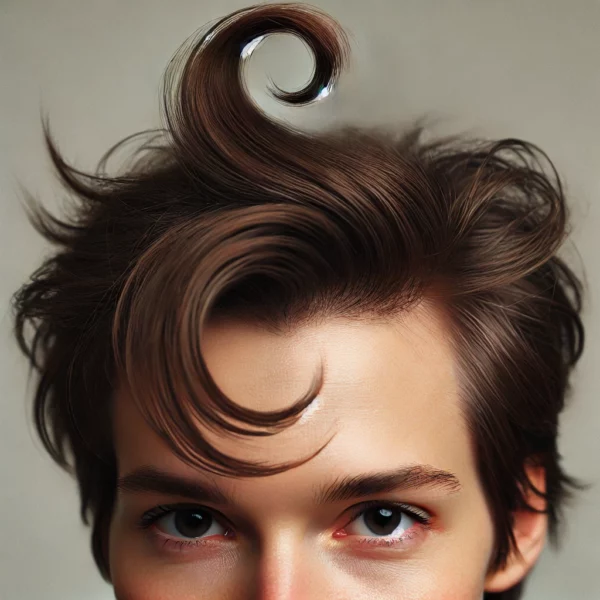Hair conditioners are an essential part of many people’s hair care routine. The basic function of a conditioner is to make hair shiny and manageable. Despite this seemingly simple goal, the world of conditioners is quite complex. Various formulations cater to different hair types, and the right conditioner can make a significant difference in the appearance and health of your hair. In this article, we will explore the different types of conditioners, their ingredients, and how to choose the best one for your hair type.
The Basics of Hair Conditioners: At their core, all hair conditioners serve the same fundamental purpose: they aim to improve the texture and appearance of hair by making it smoother, shinier, and more manageable. This is achieved through a combination of moisturizing agents, surfactants, and sometimes, proteins or other specialized ingredients that coat the hair shaft, reduce friction, and make the hair easier to comb and style.
While the basic purpose of all conditioners is the same, there are significant differences in their formulations. These differences largely pertain to whether a conditioner is oil-based or silicone-based, whether it contains film-forming agents, and the specific concentrations of these ingredients.
Primary Ingredients in Conditioners: There are several different key ingredients that can be found in conditioners. The most common are oil-based and silicone-based conditioners. Less common are conditioners wit primary ingredients that include proteins, humectants like glycerine, and volumizing conditioners that can contain special polymers.
Oil-Based Conditioners: These conditioners typically contain natural oils such as coconut oil, argan oil, or jojoba oil and similar. Oil-based conditioners are often heavier and more “moisturizing”, making them ideal for individuals with dry or damaged hair. These oils penetrate the hair shaft, providing deep conditioning and helping to repair and protect the hair from further damage. However, because they are heavier, they can also weigh the hair down, making it appear greasy if too much is applied. This is particularly problematic for individuals with fine hair or naturally oily hair.Silicone-Based Conditioners: Silicone-based conditioners create a thin, protective layer around the hair shaft. This not only adds shine but also helps to smooth the hair cuticle, reducing frizz and enhancing manageability. Silicones, such as dimethicone or cyclopentasiloxane, are common in these conditioners. They are non-allergenic, making them suitable for a wide range of individuals. Silicone-based conditioners are typically lighter than oil-based ones, making them a better choice for people with fine or normal hair. However, it’s worth noting that over time, silicones can build up on the hair, potentially leading to a dull appearance. This buildup can usually be addressed by using a clarifying shampoo intermittently.Protein-Based Conditioners: Protein-based conditioners are designed to strengthen the hair by infusing it with proteins such as keratin, silk, wheat, egg, soy proteins, and occasionally other more exotic proteins. These conditioners are particularly beneficial for damaged or chemically treated hair, as they help to repair and fortify the hair shaft. Protein-based conditioners can help to reduce breakage, improve elasticity, and give hair a smoother texture. However, overuse can lead to protein overload, making hair feel stiff or brittle, so they are best used in moderation.Moisturizing Conditioners: Moisturizing conditioners, also known as hydrating conditioners, are formulated to provide intense hydration to dry, brittle, or frizzy hair. They typically contain humectants like glycerin or aloe vera, which attract and retain moisture, as well as emollients like fatty alcohols or oils that help to seal in that moisture. These conditioners are ideal for hair that has been exposed to heat styling, harsh weather conditions, or chemical treatments.Volumizing Conditioners: Volumizing conditioners are formulated to add body and lift to fine or limp hair. They typically contain lightweight ingredients that help to plump the hair shaft without weighing it down. These conditioners often include polymers (a substance made from long chains of repeating groups of atoms) that coat the hair and create the appearance of fuller, thicker hair. Many polymer-based conditioners are synthetic, but some are natural – silk can be made into a polymer conditioner for example.Film-Forming Agents in Conditioners: In addition to the primary ingredients like oils and silicones, some conditioners also contain film-forming agents. These are ingredients that coat the hair with a thin layer of material that can make the hair appear thicker and fuller. Common film-forming agents include proteins like keratin, collagen, or hydrolyzed wheat protein.
While these agents can be beneficial for individuals with fine or thinning hair, they can also lead to problems for those with sensitive skin. There have been reports of adverse reactions to certain protein-containing conditioners, particularly those with collagen. People with sensitive skin or conditions such as seborrheic dermatitis should be cautious when choosing conditioners with film-forming agents, as they may exacerbate these conditions.
The Role of Application: While the formulation of a conditioner is important, the amount used and the way it is applied can be just as critical in obtaining a good result. Applying too much conditioner can weigh the hair down, making it feel greasy and heavy. Conversely, using too little can leave the hair feeling dry and difficult to manage.
For individuals with oily scalps but dry hair, the key can be to apply conditioner primarily to the ends and mid-lengths of the hair, avoiding the scalp skin. This can be challenging, especially for those with shorter hair, but it can help to prevent the hair from becoming limp and oily at the roots.
For those with dry or damaged hair, a more concentrated conditioner may be necessary. These conditioners typically contain higher levels of moisturizing agents and are designed to provide more intensive hydration. However, even with a concentrated formula, it’s important to start with a small amount and gradually increase if needed, to avoid over-conditioning.
Conditioners for Different Hair Types: Choosing the right conditioner for a particular hair type is important for achieving the best results. Here are some general guidelines:
Dry Hair: For dry or damaged hair, look for conditioners with a higher concentration of moisturizing agents. These may include natural oils, butters, or silicones. Avoid products with high levels of alcohol, as they can further dry out the hair. If you have particularly dry hair, consider using a deep conditioning treatment once a week in addition to your regular conditioner.Oily Hair: If you have oily hair, opt for a lighter conditioner, perhaps one that is silicone-based. Avoid applying the conditioner directly to the scalp, as this can exacerbate oiliness. Instead, focus on the mid-lengths and ends of your hair.Normal Hair: For those with normal hair, a balanced conditioner that contains both moisturizing agents and lightweight silicones is usually sufficient. This type of conditioner helps maintain the hair’s natural moisture balance while adding shine and manageability.Fine or Thinning Hair: Individuals with fine or thinning hair may benefit from conditioners that contain film-forming agents. These conditioners can help to add volume and make the hair appear thicker. However, be cautious of using too much product, as it can weigh the hair down.Potential Allergens in Conditioners: While many conditioners are formulated to be safe for most people, those with sensitive skin or allergies need to be particularly careful. Herbal ingredients, while often marketed as natural and gentle, can sometimes cause allergic reactions or exacerbate conditions like seborrheic dermatitis. Jojoba oil is often an exception, as it is one of the least allergenic natural oils and is often well-tolerated even by those with sensitive skin. Individuals with known sensitivities should also be cautious with conditioners containing proteins, particularly collagen. While these ingredients can be beneficial for hair, they have been linked to adverse skin reactions in some cases.
Separate Conditioner vs. Two-in-One Products: Another important consideration when selecting a conditioner is whether to use a separate conditioner or a two-in-one product that combines shampoo and conditioner.
Separate Conditioners: Using a separate conditioner typically provides better results. This is because the formulation of a conditioner is different from that of a shampoo, and combining the two often requires compromises that can reduce the effectiveness of each. Separate conditioners are usually more concentrated and better able to deliver the intended benefits, whether it’s moisture, shine, or volume.Two-in-One Products: While two-in-one shampoo and conditioner products offer convenience and can save time, they are often less effective than using separate products. These products can also lead to a build up of residue on the hair, as the conditioning agents may not rinse out as thoroughly as they would in a separate conditioner. This build up can leave the hair looking dull and feeling heavy over time.Conclusion: Hair conditioners can be a critical component of any hair care routine, but choosing the right one requires an understanding of your hair type, the formulation of the conditioner, and how best to apply it. Whether you prefer an oil-based or silicone-based conditioner, or one with film-forming agents, it’s important to consider your specific needs and preferences. Additionally, while two-in-one products may be convenient, they generally do not offer the same level of effectiveness as separate conditioners. By taking the time to choose the right conditioner and use it properly, you can achieve healthy, shiny, and manageable hair.
Bibliography
11711645 {11711645:IISIDJB4},{11711645:HPMD98QW},{11711645:U5J6T2WB},{11711645:IU4PXSJC},{11711645:4422X4NE},{11711645:SDCC2AQT},{11711645:33MG3Q7W},{11711645:WFUIWFHB},{11711645:H7WUA3QX},{11711645:WK8UBFV7},{11711645:G68EEBDB},{11711645:AJG6XXEV},{11711645:PAGVCQA8},{11711645:8ME97TED},{11711645:E3K43IIS} 1 vancouver 50 date asc 1603 https://www.keratin.com/wp-content/plugins/zotpress/ %7B%22status%22%3A%22success%22%2C%22updateneeded%22%3Afalse%2C%22instance%22%3Afalse%2C%22meta%22%3A%7B%22request_last%22%3A0%2C%22request_next%22%3A0%2C%22used_cache%22%3Atrue%7D%2C%22data%22%3A%5B%7B%22key%22%3A%22IISIDJB4%22%2C%22library%22%3A%7B%22id%22%3A11711645%7D%2C%22meta%22%3A%7B%22creatorSummary%22%3A%22Rushton%20et%20al.%22%2C%22parsedDate%22%3A%221994%22%2C%22numChildren%22%3A0%7D%2C%22bib%22%3A%22%3Cdiv%20class%3D%5C%22csl-bib-body%5C%22%20style%3D%5C%22line-height%3A%201.35%3B%20%5C%22%3E%5Cn%20%20%3Cdiv%20class%3D%5C%22csl-entry%5C%22%20style%3D%5C%22clear%3A%20left%3B%20%5C%22%3E%5Cn%20%20%20%20%3Cdiv%20class%3D%5C%22csl-left-margin%5C%22%20style%3D%5C%22float%3A%20left%3B%20padding-right%3A%200.5em%3B%20text-align%3A%20right%3B%20width%3A%201em%3B%5C%22%3E1.%3C%5C%2Fdiv%3E%3Cdiv%20class%3D%5C%22csl-right-inline%5C%22%20style%3D%5C%22margin%3A%200%20.4em%200%201.5em%3B%5C%22%3ERushton%20H%2C%20Gummer%20CL%2C%20Flasch%20H.%202-in-1%20shampoo%20technology%3A%20state-of-the-art%20shampoo%20and%20conditioner%20in%20one.%20Skin%20Pharmacol.%201994%3B7%281%26%23x2013%3B2%29%3A78%26%23x2013%3B83.%3C%5C%2Fdiv%3E%5Cn%20%20%20%3C%5C%2Fdiv%3E%5Cn%3C%5C%2Fdiv%3E%22%2C%22data%22%3A%7B%22itemType%22%3A%22journalArticle%22%2C%22title%22%3A%222-in-1%20shampoo%20technology%3A%20state-of-the-art%20shampoo%20and%20conditioner%20in%20one%22%2C%22creators%22%3A%5B%7B%22creatorType%22%3A%22author%22%2C%22firstName%22%3A%22H.%22%2C%22lastName%22%3A%22Rushton%22%7D%2C%7B%22creatorType%22%3A%22author%22%2C%22firstName%22%3A%22C.%20L.%22%2C%22lastName%22%3A%22Gummer%22%7D%2C%7B%22creatorType%22%3A%22author%22%2C%22firstName%22%3A%22H.%22%2C%22lastName%22%3A%22Flasch%22%7D%5D%2C%22abstractNote%22%3A%22Consumers%20have%20expressed%20a%20need%20for%20cleaning%20and%20conditioning%20in%20one%20step.%20Conventional%20shampoo%20technology%20using%20anionic%20surfactants%20and%20cationic%20conditioners%20results%20in%20charge%20interaction%20and%20complexing%20of%20the%20ingredients.%20Neither%20shampoo%20nor%20conditioners%20achieves%20the%20desired%20result.%20The%20successful%20solution%20was%20to%20incorporate%20charge%20neutral%20dimethicone%20conditioning%20ingredients%2C%20suspended%20as%20microfine%20droplets%20within%20complex%20crystal%20lattices%2C%20into%20anionic%20surfactant%20shampoo%20technology.%20The%20same%20solution%20has%20also%20been%20applied%20to%20amphoteric%20surfactant%20systems.%20This%20provides%20complete%20cleaning%2C%20and%20hair%20conditioning%20fully%20equal%20to%20separate%20conditioners%20without%20the%20problems%20of%20sebum%20interactions%20and%20conditioner%20build-up.%20This%20was%20achieved%20by%20keeping%20the%20dimethicone%20in%20suspension%20throughout%20the%20shampoo%20process.%20During%20rinsing%2C%20excess%20water%20breaks%20the%20crystalline%20lattice%20and%20allows%20deposition%20of%20the%20dimethicone%20droplets%20onto%20the%20hair.%20Full%20cleaning%20and%20conditioning%20are%2C%20therefore%2C%20achieved%20in%20one%20application.%20Dimethicone%20build-up%20is%20not%20encountered%20as%20subsequent%20washes%20first%20remove%20soil%20and%20previously%20deposited%20dimethicone.%20Neither%20do%20neutral%20dimethicones%20show%20any%20reactions%20with%20sebum.%20The%20development%20of%20effective%202-in-1%20technology%20has%20had%20a%20major%20impact%20on%20shampoo%20technology%20and%20consumer%20habits%20and%20practices.%20This%20has%20significantly%20changed%20the%20way%20consumers%20care%20for%20their%20hair.%22%2C%22date%22%3A%221994%22%2C%22language%22%3A%22eng%22%2C%22DOI%22%3A%2210.1159%5C%2F000211278%22%2C%22ISSN%22%3A%221011-0283%22%2C%22url%22%3A%22%22%2C%22collections%22%3A%5B%22NIFMMJUC%22%5D%2C%22dateModified%22%3A%222024-08-16T15%3A44%3A16Z%22%7D%7D%2C%7B%22key%22%3A%2233MG3Q7W%22%2C%22library%22%3A%7B%22id%22%3A11711645%7D%2C%22meta%22%3A%7B%22creatorSummary%22%3A%22Pasche-Koo%20et%20al.%22%2C%22parsedDate%22%3A%221996-03%22%2C%22numChildren%22%3A0%7D%2C%22bib%22%3A%22%3Cdiv%20class%3D%5C%22csl-bib-body%5C%22%20style%3D%5C%22line-height%3A%201.35%3B%20%5C%22%3E%5Cn%20%20%3Cdiv%20class%3D%5C%22csl-entry%5C%22%20style%3D%5C%22clear%3A%20left%3B%20%5C%22%3E%5Cn%20%20%20%20%3Cdiv%20class%3D%5C%22csl-left-margin%5C%22%20style%3D%5C%22float%3A%20left%3B%20padding-right%3A%200.5em%3B%20text-align%3A%20right%3B%20width%3A%201em%3B%5C%22%3E1.%3C%5C%2Fdiv%3E%3Cdiv%20class%3D%5C%22csl-right-inline%5C%22%20style%3D%5C%22margin%3A%200%20.4em%200%201.5em%3B%5C%22%3EPasche-Koo%20F%2C%20Claeys%20M%2C%20Hauser%20C.%20Contact%20urticaria%20with%20systemic%20symptoms%20caused%20by%20bovine%20collagen%20in%20a%20hair%20conditioner.%20Am%20J%20Contact%20Dermat.%201996%20Mar%3B7%281%29%3A56%26%23x2013%3B7.%3C%5C%2Fdiv%3E%5Cn%20%20%20%3C%5C%2Fdiv%3E%5Cn%3C%5C%2Fdiv%3E%22%2C%22data%22%3A%7B%22itemType%22%3A%22journalArticle%22%2C%22title%22%3A%22Contact%20urticaria%20with%20systemic%20symptoms%20caused%20by%20bovine%20collagen%20in%20a%20hair%20conditioner%22%2C%22creators%22%3A%5B%7B%22creatorType%22%3A%22author%22%2C%22firstName%22%3A%22F.%22%2C%22lastName%22%3A%22Pasche-Koo%22%7D%2C%7B%22creatorType%22%3A%22author%22%2C%22firstName%22%3A%22M.%22%2C%22lastName%22%3A%22Claeys%22%7D%2C%7B%22creatorType%22%3A%22author%22%2C%22firstName%22%3A%22C.%22%2C%22lastName%22%3A%22Hauser%22%7D%5D%2C%22abstractNote%22%3A%22A%20case%20of%20contact%20urticaria%20associated%20with%20a%20serous%20rhinitis%2C%20dyspnea%2C%20wheezing%2C%20and%20a%20dry%20cough%20appearing%20after%20the%20application%20of%20a%20hair%20conditioner%20on%20the%20scalp%20is%20reported.%20Prick%20test%20results%20with%20the%20conditioner%20diluted%20at%201%5C%2F16%20and%201%5C%2F8%20were%20strongly%20positive%20%28%2B3%29%2C%20as%20well%20as%20a%20prick%20test%20%28%2B3%29%20with%20one%20component%20of%20the%20conditioner%20called%20%5C%22hydrolyzed%20proteins%2C%5C%22%20which%20contained%20hydrolyzed%20bovine%20collagen%20and%20stearyl%20trimethylammonium%20chloride.%22%2C%22date%22%3A%221996-03%22%2C%22language%22%3A%22eng%22%2C%22DOI%22%3A%2210.1016%5C%2Fs1046-199x%2896%2990035-4%22%2C%22ISSN%22%3A%221046-199X%22%2C%22url%22%3A%22%22%2C%22collections%22%3A%5B%22NIFMMJUC%22%5D%2C%22dateModified%22%3A%222024-08-16T15%3A56%3A56Z%22%7D%7D%2C%7B%22key%22%3A%22SDCC2AQT%22%2C%22library%22%3A%7B%22id%22%3A11711645%7D%2C%22meta%22%3A%7B%22creatorSummary%22%3A%22Freeman%20and%20Lee%22%2C%22parsedDate%22%3A%221996-09%22%2C%22numChildren%22%3A0%7D%2C%22bib%22%3A%22%3Cdiv%20class%3D%5C%22csl-bib-body%5C%22%20style%3D%5C%22line-height%3A%201.35%3B%20%5C%22%3E%5Cn%20%20%3Cdiv%20class%3D%5C%22csl-entry%5C%22%20style%3D%5C%22clear%3A%20left%3B%20%5C%22%3E%5Cn%20%20%20%20%3Cdiv%20class%3D%5C%22csl-left-margin%5C%22%20style%3D%5C%22float%3A%20left%3B%20padding-right%3A%200.5em%3B%20text-align%3A%20right%3B%20width%3A%201em%3B%5C%22%3E1.%3C%5C%2Fdiv%3E%3Cdiv%20class%3D%5C%22csl-right-inline%5C%22%20style%3D%5C%22margin%3A%200%20.4em%200%201.5em%3B%5C%22%3EFreeman%20S%2C%20Lee%20MS.%20Contact%20urticaria%20to%20hair%20conditioner.%20Contact%20Dermatitis.%201996%20Sep%3B35%283%29%3A195%26%23x2013%3B6.%3C%5C%2Fdiv%3E%5Cn%20%20%20%3C%5C%2Fdiv%3E%5Cn%3C%5C%2Fdiv%3E%22%2C%22data%22%3A%7B%22itemType%22%3A%22journalArticle%22%2C%22title%22%3A%22Contact%20urticaria%20to%20hair%20conditioner%22%2C%22creators%22%3A%5B%7B%22creatorType%22%3A%22author%22%2C%22firstName%22%3A%22S.%22%2C%22lastName%22%3A%22Freeman%22%7D%2C%7B%22creatorType%22%3A%22author%22%2C%22firstName%22%3A%22M.%20S.%22%2C%22lastName%22%3A%22Lee%22%7D%5D%2C%22abstractNote%22%3A%22%22%2C%22date%22%3A%221996-09%22%2C%22language%22%3A%22eng%22%2C%22DOI%22%3A%2210.1111%5C%2Fj.1600-0536.1996.tb02356.x%22%2C%22ISSN%22%3A%220105-1873%22%2C%22url%22%3A%22%22%2C%22collections%22%3A%5B%22NIFMMJUC%22%5D%2C%22dateModified%22%3A%222024-08-16T15%3A56%3A12Z%22%7D%7D%2C%7B%22key%22%3A%22HPMD98QW%22%2C%22library%22%3A%7B%22id%22%3A11711645%7D%2C%22meta%22%3A%7B%22creatorSummary%22%3A%22Smith%20et%20al.%22%2C%22parsedDate%22%3A%221998-10%22%2C%22numChildren%22%3A0%7D%2C%22bib%22%3A%22%3Cdiv%20class%3D%5C%22csl-bib-body%5C%22%20style%3D%5C%22line-height%3A%201.35%3B%20%5C%22%3E%5Cn%20%20%3Cdiv%20class%3D%5C%22csl-entry%5C%22%20style%3D%5C%22clear%3A%20left%3B%20%5C%22%3E%5Cn%20%20%20%20%3Cdiv%20class%3D%5C%22csl-left-margin%5C%22%20style%3D%5C%22float%3A%20left%3B%20padding-right%3A%200.5em%3B%20text-align%3A%20right%3B%20width%3A%201em%3B%5C%22%3E1.%3C%5C%2Fdiv%3E%3Cdiv%20class%3D%5C%22csl-right-inline%5C%22%20style%3D%5C%22margin%3A%200%20.4em%200%201.5em%3B%5C%22%3ESmith%20HR%2C%20Wakelin%20SH%2C%20White%20IR.%20Banana%20hair%20conditioner%20and%20natural%20rubber%20latex%20allergy.%20Contact%20Dermatitis.%201998%20Oct%3B39%284%29%3A202.%3C%5C%2Fdiv%3E%5Cn%20%20%20%3C%5C%2Fdiv%3E%5Cn%3C%5C%2Fdiv%3E%22%2C%22data%22%3A%7B%22itemType%22%3A%22journalArticle%22%2C%22title%22%3A%22Banana%20hair%20conditioner%20and%20natural%20rubber%20latex%20allergy%22%2C%22creators%22%3A%5B%7B%22creatorType%22%3A%22author%22%2C%22firstName%22%3A%22H.%20R.%22%2C%22lastName%22%3A%22Smith%22%7D%2C%7B%22creatorType%22%3A%22author%22%2C%22firstName%22%3A%22S.%20H.%22%2C%22lastName%22%3A%22Wakelin%22%7D%2C%7B%22creatorType%22%3A%22author%22%2C%22firstName%22%3A%22I.%20R.%22%2C%22lastName%22%3A%22White%22%7D%5D%2C%22abstractNote%22%3A%22%22%2C%22date%22%3A%221998-10%22%2C%22language%22%3A%22eng%22%2C%22DOI%22%3A%2210.1111%5C%2Fj.1600-0536.1998.tb05901.x%22%2C%22ISSN%22%3A%220105-1873%22%2C%22url%22%3A%22%22%2C%22collections%22%3A%5B%22NIFMMJUC%22%5D%2C%22dateModified%22%3A%222024-08-16T15%3A55%3A11Z%22%7D%7D%2C%7B%22key%22%3A%224422X4NE%22%2C%22library%22%3A%7B%22id%22%3A11711645%7D%2C%22meta%22%3A%7B%22creatorSummary%22%3A%22Niinim%5Cu00e4ki%20et%20al.%22%2C%22parsedDate%22%3A%221998-11%22%2C%22numChildren%22%3A0%7D%2C%22bib%22%3A%22%3Cdiv%20class%3D%5C%22csl-bib-body%5C%22%20style%3D%5C%22line-height%3A%201.35%3B%20%5C%22%3E%5Cn%20%20%3Cdiv%20class%3D%5C%22csl-entry%5C%22%20style%3D%5C%22clear%3A%20left%3B%20%5C%22%3E%5Cn%20%20%20%20%3Cdiv%20class%3D%5C%22csl-left-margin%5C%22%20style%3D%5C%22float%3A%20left%3B%20padding-right%3A%200.5em%3B%20text-align%3A%20right%3B%20width%3A%201em%3B%5C%22%3E1.%3C%5C%2Fdiv%3E%3Cdiv%20class%3D%5C%22csl-right-inline%5C%22%20style%3D%5C%22margin%3A%200%20.4em%200%201.5em%3B%5C%22%3ENiinim%26%23xE4%3Bki%20A%2C%20Niinim%26%23xE4%3Bki%20M%2C%20M%26%23xE4%3Bkinen-Kiljunen%20S%2C%20Hannuksela%20M.%20Contact%20urticaria%20from%20protein%20hydrolysates%20in%20hair%20conditioners.%20Allergy.%201998%20Nov%3B53%2811%29%3A1078%26%23x2013%3B82.%3C%5C%2Fdiv%3E%5Cn%20%20%20%3C%5C%2Fdiv%3E%5Cn%3C%5C%2Fdiv%3E%22%2C%22data%22%3A%7B%22itemType%22%3A%22journalArticle%22%2C%22title%22%3A%22Contact%20urticaria%20from%20protein%20hydrolysates%20in%20hair%20conditioners%22%2C%22creators%22%3A%5B%7B%22creatorType%22%3A%22author%22%2C%22firstName%22%3A%22A.%22%2C%22lastName%22%3A%22Niinim%5Cu00e4ki%22%7D%2C%7B%22creatorType%22%3A%22author%22%2C%22firstName%22%3A%22M.%22%2C%22lastName%22%3A%22Niinim%5Cu00e4ki%22%7D%2C%7B%22creatorType%22%3A%22author%22%2C%22firstName%22%3A%22S.%22%2C%22lastName%22%3A%22M%5Cu00e4kinen-Kiljunen%22%7D%2C%7B%22creatorType%22%3A%22author%22%2C%22firstName%22%3A%22M.%22%2C%22lastName%22%3A%22Hannuksela%22%7D%5D%2C%22abstractNote%22%3A%22Protein%20hydrolysates%20%28PHs%29%20are%20added%20to%20hair-care%20products%20%28to%20%5C%22repair%5C%22%20broken%20hair%29%2C%20soaps%2C%20bath%20gels%2C%20creams%2C%20etc.%20From%20one%20to%2022%20PHs%20used%20in%20hair-care%20products%20%28collagen%2C%20keratin%2C%20elastin%2C%20milk%2C%20wheat%2C%20almond%2C%20and%20silk%29%20were%20tested%20in%20three%20patient%20groups%3A%20A%29%2011%20hairdressers%20with%20hand%20dermatitis%20B%29%202160%20consecutive%20adults%20with%20suspected%20allergic%20respiratory%20disease%20subjected%20to%20routine%20skin%20prick%20tests%20C%29%2028%20adults%20with%20atopic%20dermatitis.%20In%20group%20A%2C%20all%20the%2022%20PHs%20were%20tested%20with%20scratch%20and%20patch%20tests.%20In%20groups%20B%20and%20C%2C%20one%20to%20three%20PHs%20were%20tested%20with%20prick%20tests.%20Positive%20scratch%5C%2Fprick%20test%20reactions%20were%20seen%20in%2012%20patients%20from%20three%20PHs%20altogether.%20All%20were%20women%20with%20atopic%20dermatitis%2C%20and%20all%20reacted%20to%20at%20least%20hydroxypropyl%20trimonium%20hydrolyzed%20collagen%20%28Crotein%20Q%29.%20In%20three%20patients%2C%20prick%20and%20open%20tests%20with%20a%20hair%20conditioner%20containing%20Crotein%20Q%20were%20performed%20with%20positive%20results.%20One%20patient%20reported%20contact%20urticaria%20on%20her%20hands%2C%20and%20two%20reported%20acute%20urticaria%20on%20their%20head%2C%20face%2C%20and%20upper%20body%20from%20a%20hair%20conditioner%20containing%20Crotein%20Q.%20In%20seven%20of%20the%20eight%20studied%20sera%2C%20specific%20IgE%20to%20Crotein%20Q%20was%20detected.%20In%20conclusion%2C%20PHs%20of%20hair%20cosmetics%20can%20cause%20contact%20urticaria%2C%20especially%20in%20patients%20with%20atopic%20dermatitis.%22%2C%22date%22%3A%221998-11%22%2C%22language%22%3A%22eng%22%2C%22DOI%22%3A%2210.1111%5C%2Fj.1398-9995.1998.tb03818.x%22%2C%22ISSN%22%3A%220105-4538%22%2C%22url%22%3A%22%22%2C%22collections%22%3A%5B%22NIFMMJUC%22%5D%2C%22dateModified%22%3A%222024-08-16T15%3A40%3A50Z%22%7D%7D%2C%7B%22key%22%3A%22U5J6T2WB%22%2C%22library%22%3A%7B%22id%22%3A11711645%7D%2C%22meta%22%3A%7B%22creatorSummary%22%3A%22H%5Cu00f6ssel%20et%20al.%22%2C%22parsedDate%22%3A%222000-02%22%2C%22numChildren%22%3A0%7D%2C%22bib%22%3A%22%3Cdiv%20class%3D%5C%22csl-bib-body%5C%22%20style%3D%5C%22line-height%3A%201.35%3B%20%5C%22%3E%5Cn%20%20%3Cdiv%20class%3D%5C%22csl-entry%5C%22%20style%3D%5C%22clear%3A%20left%3B%20%5C%22%3E%5Cn%20%20%20%20%3Cdiv%20class%3D%5C%22csl-left-margin%5C%22%20style%3D%5C%22float%3A%20left%3B%20padding-right%3A%200.5em%3B%20text-align%3A%20right%3B%20width%3A%201em%3B%5C%22%3E1.%3C%5C%2Fdiv%3E%3Cdiv%20class%3D%5C%22csl-right-inline%5C%22%20style%3D%5C%22margin%3A%200%20.4em%200%201.5em%3B%5C%22%3EH%26%23xF6%3Bssel%20P%2C%20Dieing%20R%2C%20N%26%23xF6%3Brenberg%20R%2C%20Pfau%20A%2C%20Sander%20R.%20Conditioning%20polymers%20in%20today%26%23x2019%3Bs%20shampoo%20formulations%20-%20efficacy%2C%20mechanism%20and%20test%20methods.%20Int%20J%20Cosmet%20Sci.%202000%20Feb%3B22%281%29%3A1%26%23x2013%3B10.%3C%5C%2Fdiv%3E%5Cn%20%20%20%3C%5C%2Fdiv%3E%5Cn%3C%5C%2Fdiv%3E%22%2C%22data%22%3A%7B%22itemType%22%3A%22journalArticle%22%2C%22title%22%3A%22Conditioning%20polymers%20in%20today%27s%20shampoo%20formulations%20-%20efficacy%2C%20mechanism%20and%20test%20methods%22%2C%22creators%22%3A%5B%7B%22creatorType%22%3A%22author%22%2C%22firstName%22%3A%22P.%22%2C%22lastName%22%3A%22H%5Cu00f6ssel%22%7D%2C%7B%22creatorType%22%3A%22author%22%2C%22firstName%22%3A%22R.%22%2C%22lastName%22%3A%22Dieing%22%7D%2C%7B%22creatorType%22%3A%22author%22%2C%22firstName%22%3A%22R.%22%2C%22lastName%22%3A%22N%5Cu00f6renberg%22%7D%2C%7B%22creatorType%22%3A%22author%22%2C%22firstName%22%3A%22A.%22%2C%22lastName%22%3A%22Pfau%22%7D%2C%7B%22creatorType%22%3A%22author%22%2C%22firstName%22%3A%22R.%22%2C%22lastName%22%3A%22Sander%22%7D%5D%2C%22abstractNote%22%3A%22Today%27s%20shampoo%20formulations%20are%20beyond%20the%20stage%20of%20pure%20cleansing%20of%20the%20hair.%20Additional%20benefits%20are%20expected%2C%20e.g.%20conditioning%2C%20smoothing%20of%20the%20hair%20surface%2C%20improvement%20of%20combability%20and%20lather%20creaminess.%20Cationic%20polymers%20play%20an%20important%20role%20in%20providing%20many%20of%20those%20features.%20Therefore%2C%20within%20the%20last%20few%20years%20their%20use%20in%20shampoos%20has%20increased%20greatly.%20In%20the%20only%20last%20two%20decades%2C%20shampoo%20designation%20has%20gradually%20changed%20from%20%272-in-1%27%20to%20%273-in-1%27%20and%20then%20to%20%27multifunctional%27%2C%20as%20at%20present.%20The%20consumer%20demands%20products%20which%20live%20up%20to%20their%20promises.%20Modern%20shampoos%20contain%20a%20wide%20variety%20of%20ingredients%20such%20as%20co-surfactants%2C%20vitamins%20and%20pro-vitamins%2C%20protein%20derivatives%2C%20silicones%2C%20natural-based%20plant%20extracts%20and%20other%20%27active%20ingredients%27%2C%20but%20there%20is%20still%20a%20need%20for%20conditioning%20polymers.%20The%20specific%20objective%20of%20this%20study%20is%20to%20assess%20the%20conditioning%20efficacy%20of%20cationic%20polymers%20and%20to%20investigate%20their%20mechanisms%20in%20a%20shampoo%20system.%20The%20investigations%20were%20carried%20out%20on%20formulations%20that%20contained%20sodium%20lauryl%20ether%20sulphate%20and%20different%20cationic%20polymers%2C%20e.g.%20Polyquaternium%207%2C%2010%2C%2011%2C%20cationic%20guar%20gum%20and%20Luviquat%20Care%20%28Polyquaternium%2044%29%2C%20a%20new%20branched%20copolymer%20of%20vinylpyrrolidone%20%28VP%29%20and%20quaternized%20vinylimidazolium%20salts%20%28QVI%29.%20We%20used%20test%20methods%20relevant%20to%20the%20applications%20in%20question%2C%20such%20as%20combing%20force%20measurements%2C%20the%20feel%20of%20the%20hair%20and%20the%20creaminess%20of%20the%20lather%2C%20to%20assess%20the%20efficacy.%20Atomic%20force%20microscopy%20and%20electrokinetics%20%28streaming%20potential%29%20were%20used%20to%20detect%20polymer%20residues%20on%20treated%20hair.%20All%20the%20polymers%20under%20investigation%20improved%20the%20overall%20performance%20of%20the%20shampoo%20formulations.%20This%20was%20demonstrated%20by%20means%20of%20combing%20force%20measurements%2C%20sensorial%20tests%20and%20analytical%20methods%2C%20namely%20zeta%20potential%20measurement%20and%20atomic%20force%20microscopy.%20Polyquaternium%2044%20exhibited%20the%20best%20conditioning%20properties%20on%20wet%20hair%20without%20sacrificing%20removability%20or%20absence%20of%20build-up.%20The%20latter%20are%20the%20most%20striking%20weaknesses%20of%20cationic%20Guar%20Gum-based%20polymers.%20Polyquaternium%2010%20can%20also%20be%20removed%20from%20the%20hair%20after%20rinsing%20with%20anionic%20surfactant%20but%20it%20does%20not%20perform%20as%20well%20as%20Polyquaternium%2044%20in%20the%20fields%20of%20wet%20combability%20and%20sensorial%20criteria%20such%20as%20lather%20creaminess%20and%20feel%20of%20the%20hair.%20We%20postulate%20that%20the%20outstanding%20properties%20of%20Polyquaternium%2044%20as%20a%20conditioning%20agent%20for%20shampoos%20are%20due%20to%20its%20tailor-made%20%27branched%27%20structure.%20There%20is%20a%20clear%20correlation%20between%20the%20molecular%20weight%20and%20the%20efficacy%20of%20the%20new%20copolymers%20of%20VP%20and%20QVI.%20Only%20cationic%20polymers%20with%20a%20very%20high%20molecular%20weight%20are%20effective%20as%20conditioners%20in%20shampoos%20based%20on%20anionic%20surfactants.%20Surprisingly%2C%20they%20do%20not%20have%20to%20have%20a%20high%20cationic%20charge.%20On%20the%20basis%20of%20all%20our%20results%2C%20our%20postulation%20is%20that%20the%20polymer%20residue%20which%20is%20responsible%20for%20conditioning%20does%20not%20form%20a%20flat%20layer%20on%20the%20hair.%20Rather%2C%20the%20polymer%20residue%20adsorbs%20with%20the%20few%20cationic%20moieties%2C%20while%20the%20uncharged%20part%20of%20the%20polymer%20forms%20loops%2C%20which%20are%20orientated%20away%20from%20the%20hair%20and%20which%20are%20responsible%20for%20the%20reduced%20friction%20between%20hairs.%22%2C%22date%22%3A%222000-02%22%2C%22language%22%3A%22eng%22%2C%22DOI%22%3A%2210.1046%5C%2Fj.1467-2494.2000.00003.x%22%2C%22ISSN%22%3A%221468-2494%22%2C%22url%22%3A%22%22%2C%22collections%22%3A%5B%22NIFMMJUC%22%5D%2C%22dateModified%22%3A%222024-08-16T15%3A45%3A00Z%22%7D%7D%2C%7B%22key%22%3A%228ME97TED%22%2C%22library%22%3A%7B%22id%22%3A11711645%7D%2C%22meta%22%3A%7B%22creatorSummary%22%3A%22Guin%22%2C%22parsedDate%22%3A%222000-05%22%2C%22numChildren%22%3A0%7D%2C%22bib%22%3A%22%3Cdiv%20class%3D%5C%22csl-bib-body%5C%22%20style%3D%5C%22line-height%3A%201.35%3B%20%5C%22%3E%5Cn%20%20%3Cdiv%20class%3D%5C%22csl-entry%5C%22%20style%3D%5C%22clear%3A%20left%3B%20%5C%22%3E%5Cn%20%20%20%20%3Cdiv%20class%3D%5C%22csl-left-margin%5C%22%20style%3D%5C%22float%3A%20left%3B%20padding-right%3A%200.5em%3B%20text-align%3A%20right%3B%20width%3A%201em%3B%5C%22%3E1.%3C%5C%2Fdiv%3E%3Cdiv%20class%3D%5C%22csl-right-inline%5C%22%20style%3D%5C%22margin%3A%200%20.4em%200%201.5em%3B%5C%22%3EGuin%20JD.%20Reaction%20to%20cocamidopropyl%20hydroxysultaine%2C%20an%20amphoteric%20surfactant%20and%20conditioner.%20Contact%20Dermatitis.%202000%20May%3B42%285%29%3A284.%3C%5C%2Fdiv%3E%5Cn%20%20%20%3C%5C%2Fdiv%3E%5Cn%3C%5C%2Fdiv%3E%22%2C%22data%22%3A%7B%22itemType%22%3A%22journalArticle%22%2C%22title%22%3A%22Reaction%20to%20cocamidopropyl%20hydroxysultaine%2C%20an%20amphoteric%20surfactant%20and%20conditioner%22%2C%22creators%22%3A%5B%7B%22creatorType%22%3A%22author%22%2C%22firstName%22%3A%22J.%20D.%22%2C%22lastName%22%3A%22Guin%22%7D%5D%2C%22abstractNote%22%3A%22%22%2C%22date%22%3A%222000-05%22%2C%22language%22%3A%22eng%22%2C%22DOI%22%3A%22%22%2C%22ISSN%22%3A%220105-1873%22%2C%22url%22%3A%22%22%2C%22collections%22%3A%5B%22NIFMMJUC%22%5D%2C%22dateModified%22%3A%222024-08-16T15%3A54%3A22Z%22%7D%7D%2C%7B%22key%22%3A%22IU4PXSJC%22%2C%22library%22%3A%7B%22id%22%3A11711645%7D%2C%22meta%22%3A%7B%22creatorSummary%22%3A%22Schalock%20et%20al.%22%2C%22parsedDate%22%3A%222000-10%22%2C%22numChildren%22%3A0%7D%2C%22bib%22%3A%22%3Cdiv%20class%3D%5C%22csl-bib-body%5C%22%20style%3D%5C%22line-height%3A%201.35%3B%20%5C%22%3E%5Cn%20%20%3Cdiv%20class%3D%5C%22csl-entry%5C%22%20style%3D%5C%22clear%3A%20left%3B%20%5C%22%3E%5Cn%20%20%20%20%3Cdiv%20class%3D%5C%22csl-left-margin%5C%22%20style%3D%5C%22float%3A%20left%3B%20padding-right%3A%200.5em%3B%20text-align%3A%20right%3B%20width%3A%201em%3B%5C%22%3E1.%3C%5C%2Fdiv%3E%3Cdiv%20class%3D%5C%22csl-right-inline%5C%22%20style%3D%5C%22margin%3A%200%20.4em%200%201.5em%3B%5C%22%3ESchalock%20PC%2C%20Storrs%20FJ%2C%20Morrison%20L.%20Contact%20urticaria%20from%20panthenol%20in%20hair%20conditioner.%20Contact%20Dermatitis.%202000%20Oct%3B43%284%29%3A223.%3C%5C%2Fdiv%3E%5Cn%20%20%20%3C%5C%2Fdiv%3E%5Cn%3C%5C%2Fdiv%3E%22%2C%22data%22%3A%7B%22itemType%22%3A%22journalArticle%22%2C%22title%22%3A%22Contact%20urticaria%20from%20panthenol%20in%20hair%20conditioner%22%2C%22creators%22%3A%5B%7B%22creatorType%22%3A%22author%22%2C%22firstName%22%3A%22P.%20C.%22%2C%22lastName%22%3A%22Schalock%22%7D%2C%7B%22creatorType%22%3A%22author%22%2C%22firstName%22%3A%22F.%20J.%22%2C%22lastName%22%3A%22Storrs%22%7D%2C%7B%22creatorType%22%3A%22author%22%2C%22firstName%22%3A%22L.%22%2C%22lastName%22%3A%22Morrison%22%7D%5D%2C%22abstractNote%22%3A%22%22%2C%22date%22%3A%222000-10%22%2C%22language%22%3A%22eng%22%2C%22DOI%22%3A%2210.1034%5C%2Fj.1600-0536.2000.043004223.x%22%2C%22ISSN%22%3A%220105-1873%22%2C%22url%22%3A%22%22%2C%22collections%22%3A%5B%22NIFMMJUC%22%5D%2C%22dateModified%22%3A%222024-08-16T15%3A53%3A31Z%22%7D%7D%2C%7B%22key%22%3A%22WK8UBFV7%22%2C%22library%22%3A%7B%22id%22%3A11711645%7D%2C%22meta%22%3A%7B%22creatorSummary%22%3A%22Reich%20and%20Su%22%2C%22parsedDate%22%3A%222001%22%2C%22numChildren%22%3A0%7D%2C%22bib%22%3A%22%3Cdiv%20class%3D%5C%22csl-bib-body%5C%22%20style%3D%5C%22line-height%3A%201.35%3B%20%5C%22%3E%5Cn%20%20%3Cdiv%20class%3D%5C%22csl-entry%5C%22%20style%3D%5C%22clear%3A%20left%3B%20%5C%22%3E%5Cn%20%20%20%20%3Cdiv%20class%3D%5C%22csl-left-margin%5C%22%20style%3D%5C%22float%3A%20left%3B%20padding-right%3A%200.5em%3B%20text-align%3A%20right%3B%20width%3A%201em%3B%5C%22%3E1.%3C%5C%2Fdiv%3E%3Cdiv%20class%3D%5C%22csl-right-inline%5C%22%20style%3D%5C%22margin%3A%200%20.4em%200%201.5em%3B%5C%22%3EReich%20C%2C%20Su%20DT.%20Hair%20Conditioners.%20In%3A%20Handbook%20of%20Cosmetic%20Science%20and%20Technology.%20CRC%20Press%3B%202001.%3C%5C%2Fdiv%3E%5Cn%20%20%20%3C%5C%2Fdiv%3E%5Cn%3C%5C%2Fdiv%3E%22%2C%22data%22%3A%7B%22itemType%22%3A%22bookSection%22%2C%22title%22%3A%22Hair%20Conditioners%22%2C%22creators%22%3A%5B%7B%22creatorType%22%3A%22author%22%2C%22firstName%22%3A%22Charles%22%2C%22lastName%22%3A%22Reich%22%7D%2C%7B%22creatorType%22%3A%22author%22%2C%22firstName%22%3A%22Dean%20T.%22%2C%22lastName%22%3A%22Su%22%7D%5D%2C%22abstractNote%22%3A%22Despite%20myriad%20claimed%20bene%5Cufb01ts%2C%20the%20primary%20purpose%20of%20a%20hair%20conditioner%20is%20to%20reduce%5Cnthe%20magnitude%20of%20the%20forces%20associated%20with%20combing%20or%20brushing%20hair%20%5B1%5D%2C%20especially%20when%5Cnwet%20%5B2%2C3%5D.%20This%20is%20generally%20accomplished%20by%20the%20deposition%20of%20conditioning%20agents%20that%5Cnlubricate%20the%20hair%20%5Cufb01ber%2C%20diminishing%20surface%20friction%20and%2C%20therefore%2C%20combing%20forces%20%5B4%5D.%22%2C%22bookTitle%22%3A%22Handbook%20of%20Cosmetic%20Science%20and%20Technology%22%2C%22date%22%3A%222001%22%2C%22language%22%3A%22%22%2C%22ISBN%22%3A%229780429164521%22%2C%22url%22%3A%22%22%2C%22collections%22%3A%5B%22NIFMMJUC%22%5D%2C%22dateModified%22%3A%222024-08-16T16%3A08%3A29Z%22%7D%7D%2C%7B%22key%22%3A%22AJG6XXEV%22%2C%22library%22%3A%7B%22id%22%3A11711645%7D%2C%22meta%22%3A%7B%22creatorSummary%22%3A%22Goddard%22%2C%22parsedDate%22%3A%222002%22%2C%22numChildren%22%3A0%7D%2C%22bib%22%3A%22%3Cdiv%20class%3D%5C%22csl-bib-body%5C%22%20style%3D%5C%22line-height%3A%201.35%3B%20%5C%22%3E%5Cn%20%20%3Cdiv%20class%3D%5C%22csl-entry%5C%22%20style%3D%5C%22clear%3A%20left%3B%20%5C%22%3E%5Cn%20%20%20%20%3Cdiv%20class%3D%5C%22csl-left-margin%5C%22%20style%3D%5C%22float%3A%20left%3B%20padding-right%3A%200.5em%3B%20text-align%3A%20right%3B%20width%3A%201em%3B%5C%22%3E1.%3C%5C%2Fdiv%3E%3Cdiv%20class%3D%5C%22csl-right-inline%5C%22%20style%3D%5C%22margin%3A%200%20.4em%200%201.5em%3B%5C%22%3EGoddard%20ED.%20Mechanisms%20in%20combination%20cleaner%5C%2Fconditioner%20systems.%20J%20Cosmet%20Sci.%202002%3B53%285%29%3A283%26%23x2013%3B6.%3C%5C%2Fdiv%3E%5Cn%20%20%20%3C%5C%2Fdiv%3E%5Cn%3C%5C%2Fdiv%3E%22%2C%22data%22%3A%7B%22itemType%22%3A%22journalArticle%22%2C%22title%22%3A%22Mechanisms%20in%20combination%20cleaner%5C%2Fconditioner%20systems%22%2C%22creators%22%3A%5B%7B%22creatorType%22%3A%22author%22%2C%22firstName%22%3A%22E.%20D.%22%2C%22lastName%22%3A%22Goddard%22%7D%5D%2C%22abstractNote%22%3A%22%22%2C%22date%22%3A%222002%22%2C%22language%22%3A%22eng%22%2C%22DOI%22%3A%22%22%2C%22ISSN%22%3A%221525-7886%22%2C%22url%22%3A%22%22%2C%22collections%22%3A%5B%22NIFMMJUC%22%5D%2C%22dateModified%22%3A%222024-08-16T15%3A52%3A48Z%22%7D%7D%2C%7B%22key%22%3A%22G68EEBDB%22%2C%22library%22%3A%7B%22id%22%3A11711645%7D%2C%22meta%22%3A%7B%22creatorSummary%22%3A%22Robbins%22%2C%22parsedDate%22%3A%222012%22%2C%22numChildren%22%3A0%7D%2C%22bib%22%3A%22%3Cdiv%20class%3D%5C%22csl-bib-body%5C%22%20style%3D%5C%22line-height%3A%201.35%3B%20%5C%22%3E%5Cn%20%20%3Cdiv%20class%3D%5C%22csl-entry%5C%22%20style%3D%5C%22clear%3A%20left%3B%20%5C%22%3E%5Cn%20%20%20%20%3Cdiv%20class%3D%5C%22csl-left-margin%5C%22%20style%3D%5C%22float%3A%20left%3B%20padding-right%3A%200.5em%3B%20text-align%3A%20right%3B%20width%3A%201em%3B%5C%22%3E1.%3C%5C%2Fdiv%3E%3Cdiv%20class%3D%5C%22csl-right-inline%5C%22%20style%3D%5C%22margin%3A%200%20.4em%200%201.5em%3B%5C%22%3ERobbins%20CR.%20Interactions%20of%20Shampoo%20and%20Conditioner%20Ingredients%20with%20Hair.%20In%3A%20Robbins%20CR%2C%20editor.%20Chemical%20and%20Physical%20Behavior%20of%20Human%20Hair.%20Berlin%2C%20Heidelberg%3A%20Springer%3B%202012.%20p.%20329%26%23x2013%3B443.%3C%5C%2Fdiv%3E%5Cn%20%20%20%3C%5C%2Fdiv%3E%5Cn%3C%5C%2Fdiv%3E%22%2C%22data%22%3A%7B%22itemType%22%3A%22bookSection%22%2C%22title%22%3A%22Interactions%20of%20Shampoo%20and%20Conditioner%20Ingredients%20with%20Hair%22%2C%22creators%22%3A%5B%7B%22creatorType%22%3A%22author%22%2C%22firstName%22%3A%22Clarence%20R.%22%2C%22lastName%22%3A%22Robbins%22%7D%2C%7B%22creatorType%22%3A%22editor%22%2C%22firstName%22%3A%22Clarence%20R.%22%2C%22lastName%22%3A%22Robbins%22%7D%5D%2C%22abstractNote%22%3A%22Shampoos%20and%20hair%20conditioners%20function%20primarily%20at%20or%20near%20the%20fiber%20surface.%20The%20primary%20function%20of%20shampoos%20is%20to%20remove%20soils%20or%20dirt%20from%20the%20hair%20surface%2C%20however%2C%20hair%20soils%20are%20highly%20varied%20from%20oily%20to%20particulate%20and%20the%20mechanisms%20for%20removal%20of%20these%20different%20soils%20also%20differ.%20Secondary%20functions%20of%20shampoos%20are%20also%20varied%20from%20conditioning%20the%20hair%20to%20dandruff%20control.%20With%20increasing%20damage%20to%20hair%20whether%20by%20chemical%20or%20photochemical%20reactions%20or%20even%20by%20abrasion%2C%20the%20hair%20surface%20becomes%20more%20hydrophilic%20and%20more%20acidic%20or%20anionic%20in%20character%20thus%20changing%20the%20affinity%20for%20different%20ingredients.%20Shampoos%20are%20often%20perceived%20as%20products%20that%20do%20not%20damage%20the%20hair%3B%20however%20damage%20can%20occur%20from%20some%20shampoos%20and%20such%20damage%20is%20described%20in%20detail.%20Different%20types%20of%20tests%20from%20laboratory%20to%20half%20head%20to%20tests%20on%20consumers%20are%20employed%20to%20evaluate%20the%20functionality%20of%20shampoos.%20These%20tests%20are%20described%20in%20detail%20with%20contrasts%20and%20some%20useful%20conclusions%20and%20insights.%20The%20sorption%20of%20shampoo%20and%20conditioning%20ingredients%20to%20hair%20including%20theories%20of%20sorption%20and%20diffusion%20are%20described%20in%20detail.%20Dandruff%20including%20scalp%20flaking%2C%20and%20skin%20irritation%20by%20surfactants%20is%20described%20in%20the%20last%20part%20of%20this%20chapter.%22%2C%22bookTitle%22%3A%22Chemical%20and%20Physical%20Behavior%20of%20Human%20Hair%22%2C%22date%22%3A%222012%22%2C%22language%22%3A%22en%22%2C%22ISBN%22%3A%229783642256110%22%2C%22url%22%3A%22%22%2C%22collections%22%3A%5B%22NIFMMJUC%22%5D%2C%22dateModified%22%3A%222024-08-16T16%3A19%3A18Z%22%7D%7D%2C%7B%22key%22%3A%22WFUIWFHB%22%2C%22library%22%3A%7B%22id%22%3A11711645%7D%2C%22meta%22%3A%7B%22creatorSummary%22%3A%22Villa%20et%20al.%22%2C%22parsedDate%22%3A%222013-02-18%22%2C%22numChildren%22%3A0%7D%2C%22bib%22%3A%22%3Cdiv%20class%3D%5C%22csl-bib-body%5C%22%20style%3D%5C%22line-height%3A%201.35%3B%20%5C%22%3E%5Cn%20%20%3Cdiv%20class%3D%5C%22csl-entry%5C%22%20style%3D%5C%22clear%3A%20left%3B%20%5C%22%3E%5Cn%20%20%20%20%3Cdiv%20class%3D%5C%22csl-left-margin%5C%22%20style%3D%5C%22float%3A%20left%3B%20padding-right%3A%200.5em%3B%20text-align%3A%20right%3B%20width%3A%201em%3B%5C%22%3E1.%3C%5C%2Fdiv%3E%3Cdiv%20class%3D%5C%22csl-right-inline%5C%22%20style%3D%5C%22margin%3A%200%20.4em%200%201.5em%3B%5C%22%3EVilla%20ALV%2C%20Arag%26%23xE3%3Bo%20MRS%2C%20Dos%20Santos%20EP%2C%20Mazotto%20AM%2C%20Zingali%20RB%2C%20de%20Souza%20EP%2C%20et%20al.%20Feather%20keratin%20hydrolysates%20obtained%20from%20microbial%20keratinases%3A%20effect%20on%20hair%20fiber.%20BMC%20Biotechnol.%202013%20Feb%2018%3B13%3A15.%3C%5C%2Fdiv%3E%5Cn%20%20%20%3C%5C%2Fdiv%3E%5Cn%3C%5C%2Fdiv%3E%22%2C%22data%22%3A%7B%22itemType%22%3A%22journalArticle%22%2C%22title%22%3A%22Feather%20keratin%20hydrolysates%20obtained%20from%20microbial%20keratinases%3A%20effect%20on%20hair%20fiber%22%2C%22creators%22%3A%5B%7B%22creatorType%22%3A%22author%22%2C%22firstName%22%3A%22Ana%20L%5Cu00facia%20Vazquez%22%2C%22lastName%22%3A%22Villa%22%7D%2C%7B%22creatorType%22%3A%22author%22%2C%22firstName%22%3A%22M%5Cu00e1rcia%20Regina%20Senrra%22%2C%22lastName%22%3A%22Arag%5Cu00e3o%22%7D%2C%7B%22creatorType%22%3A%22author%22%2C%22firstName%22%3A%22Elisabete%20Pereira%22%2C%22lastName%22%3A%22Dos%20Santos%22%7D%2C%7B%22creatorType%22%3A%22author%22%2C%22firstName%22%3A%22Ana%20Maria%22%2C%22lastName%22%3A%22Mazotto%22%7D%2C%7B%22creatorType%22%3A%22author%22%2C%22firstName%22%3A%22Russolina%20B.%22%2C%22lastName%22%3A%22Zingali%22%7D%2C%7B%22creatorType%22%3A%22author%22%2C%22firstName%22%3A%22Edilma%20Paraguai%22%2C%22lastName%22%3A%22de%20Souza%22%7D%2C%7B%22creatorType%22%3A%22author%22%2C%22firstName%22%3A%22Alane%20Beatriz%22%2C%22lastName%22%3A%22Vermelho%22%7D%5D%2C%22abstractNote%22%3A%22BACKGROUND%3A%20Hair%20is%20composed%20mainly%20of%20keratin%20protein%20and%20a%20small%20amount%20of%20lipid.%20Protein%20hydrolysates%2C%20in%20particular%20those%20with%20low%20molecular%20weight%20distribution%20have%20been%20known%20to%20protect%20hair%20against%20chemical%20and%20environmental%20damage.%20Many%20types%20of%20protein%20hydrolysates%20from%20plants%20and%20animals%20have%20been%20used%20in%20hair%20and%20personal%20care%20such%20as%20keratin%20hydrolysates%20obtained%20from%20nails%2C%20horns%20and%20wool.%20Most%20of%20these%20hydrolysates%20are%20obtained%20by%20chemical%20hydrolysis%20and%20hydrothermal%20methods%2C%20but%20recently%20hydrolyzed%20hair%20keratin%2C%20feather%20keratin%20peptides%2C%20and%20feather%20meal%20peptides%20have%20been%20obtained%20by%20enzymatic%20hydrolysis%20using%20Bacillus%20spp%20in%20submerged%20fermentation.%5CnRESULTS%3A%20Keratin%20peptides%20were%20obtained%20by%20enzymatic%20hydrolysis%20of%20keratinases%20using%20Bacillus%20subtilis%20AMR.%20The%20microorganism%20was%20grown%20on%20a%20feather%20medium%2C%20pH%208.0%20%281%25%20feathers%29%20and%20supplemented%20with%200.01%25%20of%20yeast%20extract%2C%20for%205%20days%2C%20at%2028%5Cu00b0C%20with%20agitation.%20The%20supernatant%20containing%20the%20hydrolysates%20was%20colleted%20by%20centrifugation%20and%20ultra%20filtered%20in%20an%20AMICON%20system%20using%20nano-membranes%20%28Millipore%20-%20YC05%29.%20The%20Proteins%20and%20peptides%20were%20analyzed%20using%20HPTLC%20and%20MALDI-TOF-MS.%20Commercial%20preparations%20of%20keratin%20hydrolysates%20were%20used%20as%20a%20comparative%20standard.%20After%20five%20days%20the%20feather%20had%20been%20degraded%20%2890-95%25%29%20by%20the%20peptidases%20and%20keratinases%20of%20the%20microorganism.%20MALDI-TOF%20mass%20spectrometry%20showed%20multiple%20peaks%20that%20correspond%20to%20peptides%20in%20the%20range%20of%20800%20to%201079%20Daltons%20and%20the%20commercial%20hydrolysate%20was%20in%20the%20range%20of%20900%20to%201400%20Da.%20HPTLC%20showed%20lower%20molecular%20mass%20peptides%20and%20amino%20acids%20in%20the%20enzymatic%20hydrolysate%20when%20compared%20with%20the%20commercial%20hydrolysate%20.%20A%20mild%20shampoo%20and%20a%20rinse%20off%20conditioner%20were%20formulated%20with%20the%20enzymatic%20hydrolysate%20and%20applied%20to%20hair%20fibers%20to%20evaluate%20the%20hydration%2C%20with%20and%20without%20heat%2C%20using%20a%20Corneometer%5Cu00ae%20CM%20825.%20The%20hydration%20was%20more%20efficient%20with%20heat%2C%20suggesting%20a%20more%20complete%20incorporation%20of%20hydrolysates%20into%20the%20fibers.%20Scanning%20Electron%20Microscopy%20showed%20deposits%20of%20organic%20matter%20in%20the%20junction%20of%20the%20cuticles%20that%20probably%20collaborates%20to%20the%20sealing%20of%20the%20cuticles%2C%20increasing%20the%20brightness%20and%20softness.%5CnCONCLUSIONS%3A%20These%20results%20show%20that%20the%20enzymatic%20method%20to%20produce%20keratin%20peptides%20for%20hair%20care%20products%20is%20an%20attractive%20and%20eco-%20friendly%20method%20with%20a%20great%20potential%20in%20the%20cosmetic%20industry.%22%2C%22date%22%3A%222013-02-18%22%2C%22language%22%3A%22eng%22%2C%22DOI%22%3A%2210.1186%5C%2F1472-6750-13-15%22%2C%22ISSN%22%3A%221472-6750%22%2C%22url%22%3A%22%22%2C%22collections%22%3A%5B%22NIFMMJUC%22%5D%2C%22dateModified%22%3A%222024-08-16T15%3A42%3A44Z%22%7D%7D%2C%7B%22key%22%3A%22H7WUA3QX%22%2C%22library%22%3A%7B%22id%22%3A11711645%7D%2C%22meta%22%3A%7B%22creatorSummary%22%3A%22Barve%20and%20Dighe%22%2C%22parsedDate%22%3A%222016%22%2C%22numChildren%22%3A0%7D%2C%22bib%22%3A%22%3Cdiv%20class%3D%5C%22csl-bib-body%5C%22%20style%3D%5C%22line-height%3A%201.35%3B%20%5C%22%3E%5Cn%20%20%3Cdiv%20class%3D%5C%22csl-entry%5C%22%20style%3D%5C%22clear%3A%20left%3B%20%5C%22%3E%5Cn%20%20%20%20%3Cdiv%20class%3D%5C%22csl-left-margin%5C%22%20style%3D%5C%22float%3A%20left%3B%20padding-right%3A%200.5em%3B%20text-align%3A%20right%3B%20width%3A%201em%3B%5C%22%3E1.%3C%5C%2Fdiv%3E%3Cdiv%20class%3D%5C%22csl-right-inline%5C%22%20style%3D%5C%22margin%3A%200%20.4em%200%201.5em%3B%5C%22%3EBarve%20K%2C%20Dighe%20A.%20Hair%20Conditioner.%20In%3A%20Barve%20K%2C%20Dighe%20A%2C%20editors.%20The%20Chemistry%20and%20Applications%20of%20Sustainable%20Natural%20Hair%20Products.%20Cham%3A%20Springer%20International%20Publishing%3B%202016.%20p.%2037%26%23x2013%3B44.%3C%5C%2Fdiv%3E%5Cn%20%20%20%3C%5C%2Fdiv%3E%5Cn%3C%5C%2Fdiv%3E%22%2C%22data%22%3A%7B%22itemType%22%3A%22bookSection%22%2C%22title%22%3A%22Hair%20Conditioner%22%2C%22creators%22%3A%5B%7B%22creatorType%22%3A%22author%22%2C%22firstName%22%3A%22Kalyani%22%2C%22lastName%22%3A%22Barve%22%7D%2C%7B%22creatorType%22%3A%22author%22%2C%22firstName%22%3A%22Apurva%22%2C%22lastName%22%3A%22Dighe%22%7D%2C%7B%22creatorType%22%3A%22editor%22%2C%22firstName%22%3A%22Kalyani%22%2C%22lastName%22%3A%22Barve%22%7D%2C%7B%22creatorType%22%3A%22editor%22%2C%22firstName%22%3A%22Apurva%22%2C%22lastName%22%3A%22Dighe%22%7D%5D%2C%22abstractNote%22%3A%22Nowadays%20the%20use%20of%20hair%20products%20to%20modify%20the%20look%20has%20become%20unavoidable.%20Hair%20products%20like%20shampoos%2C%20hairstyling%20gels%2C%20straight%20iron%2C%20curling%20iron%20etc.%20induce%20damage%20to%20the%20hair%20follicle%20as%20well%20as%20the%20hair%20shaft%20making%20them%20brittle%2C%20dry%20and%20causing%20split%20ends.%20One%20way%20of%20treating%20this%20is%20to%20stop%20the%20use%20of%20these%20harmful%20hair%20products%20or%20another%20way%20is%20to%20restore%20hair%20shine%20and%20softness%20by%20replenishing%20the%20lost%5C%2Fdamaged%20sebum%20and%20keratin%20from%20the%20hair.%20This%20can%20be%20done%20with%20the%20use%20of%20conditioners.%20In%20this%20chapter%20few%20natural%20sources%20which%20can%20be%20used%20as%20hair%20conditioners%20along%20with%20their%20chemistry%20are%20described.%22%2C%22bookTitle%22%3A%22The%20Chemistry%20and%20Applications%20of%20Sustainable%20Natural%20Hair%20Products%22%2C%22date%22%3A%222016%22%2C%22language%22%3A%22en%22%2C%22ISBN%22%3A%229783319294193%22%2C%22url%22%3A%22%22%2C%22collections%22%3A%5B%22NIFMMJUC%22%5D%2C%22dateModified%22%3A%222024-08-16T16%3A04%3A25Z%22%7D%7D%2C%7B%22key%22%3A%22E3K43IIS%22%2C%22library%22%3A%7B%22id%22%3A11711645%7D%2C%22meta%22%3A%7B%22creatorSummary%22%3A%22Brenaut%20et%20al.%22%2C%22parsedDate%22%3A%222020%22%2C%22numChildren%22%3A0%7D%2C%22bib%22%3A%22%3Cdiv%20class%3D%5C%22csl-bib-body%5C%22%20style%3D%5C%22line-height%3A%201.35%3B%20%5C%22%3E%5Cn%20%20%3Cdiv%20class%3D%5C%22csl-entry%5C%22%20style%3D%5C%22clear%3A%20left%3B%20%5C%22%3E%5Cn%20%20%20%20%3Cdiv%20class%3D%5C%22csl-left-margin%5C%22%20style%3D%5C%22float%3A%20left%3B%20padding-right%3A%200.5em%3B%20text-align%3A%20right%3B%20width%3A%201em%3B%5C%22%3E1.%3C%5C%2Fdiv%3E%3Cdiv%20class%3D%5C%22csl-right-inline%5C%22%20style%3D%5C%22margin%3A%200%20.4em%200%201.5em%3B%5C%22%3EBrenaut%20E%2C%20Misery%20L%2C%20Legeas%20C%2C%20Roudot%20AC%2C%20Ficheux%20AS.%20Sensitive%20Scalp%3A%20A%20Possible%20Association%20With%20the%20Use%20of%20Hair%20Conditioners.%20Front%20Med%20%28Lausanne%29.%202020%3B7%3A596544.%3C%5C%2Fdiv%3E%5Cn%20%20%20%3C%5C%2Fdiv%3E%5Cn%3C%5C%2Fdiv%3E%22%2C%22data%22%3A%7B%22itemType%22%3A%22journalArticle%22%2C%22title%22%3A%22Sensitive%20Scalp%3A%20A%20Possible%20Association%20With%20the%20Use%20of%20Hair%20Conditioners%22%2C%22creators%22%3A%5B%7B%22creatorType%22%3A%22author%22%2C%22firstName%22%3A%22Emilie%22%2C%22lastName%22%3A%22Brenaut%22%7D%2C%7B%22creatorType%22%3A%22author%22%2C%22firstName%22%3A%22Laurent%22%2C%22lastName%22%3A%22Misery%22%7D%2C%7B%22creatorType%22%3A%22author%22%2C%22firstName%22%3A%22C%5Cu00e9cile%22%2C%22lastName%22%3A%22Legeas%22%7D%2C%7B%22creatorType%22%3A%22author%22%2C%22firstName%22%3A%22Alain-Claude%22%2C%22lastName%22%3A%22Roudot%22%7D%2C%7B%22creatorType%22%3A%22author%22%2C%22firstName%22%3A%22Anne-Sophie%22%2C%22lastName%22%3A%22Ficheux%22%7D%5D%2C%22abstractNote%22%3A%22A%20sensitive%20scalp%20is%20defined%20by%20the%20occurrence%20of%20unpleasant%20sensations%20%28tingling%2C%20burning%2C%20pain%2C%20pruritus%29%20triggered%20by%20stimuli%20that%20should%20not%20cause%20such%20sensations.%20Environmental%20factors%2C%20particularly%20cosmetics%2C%20can%20be%20triggering%20factors.%20The%20aims%20of%20this%20study%20were%20to%20assess%20hair%20cosmetic%20product%20consumption%20in%20subjects%20with%20sensitive%20scalp%20and%20to%20perform%20a%20clinical%20evaluation%20of%20sensitive%20scalp.%20After%20a%20dermatological%20examination%2C%20women%20between%20the%20ages%20of%2018%20and%2065%20years%20with%20or%20without%20a%20sensitive%20scalp%20completed%20different%20questionnaires.%20Their%20use%20of%20hair%20cosmetics%20%28frequency%2C%20amount%20per%20application%29%20was%20recorded.%20A%20total%20of%20160%20women%20with%20a%20mean%20age%20of%2041%20years%20were%20included.%20Twenty-seven%20subjects%20presented%20with%20seborrheic%20dermatitis%20or%20psoriasis%2C%20so%20only%20133%20were%20included%20in%20the%20analysis.%20Five%20percent%20of%20the%20subjects%20declared%20they%20had%20a%20very%20sensitive%20scalp%2C%2025%25%20had%20a%20sensitive%20scalp%2C%2038%25%20had%20a%20slightly%20sensitive%20scalp%2C%20and%2032%25%20had%20a%20scalp%20that%20was%20not%20sensitive.%20The%20mean%20sensitive%20scalp%20score%20%283S%29%20score%20was%203.7%20%5Cu00b1%201.6%20in%20the%20very%20sensitive%20scalp%20group%2C%203.6%20%5Cu00b1%202.1%20in%20the%20sensitive%20group%2C%201.2%20%5Cu00b1%201.2%20in%20the%20slightly%20sensitive%20group%20and%200.1%20%5Cu00b1%200.4%20in%20the%20non-sensitive%20group.%20Two%20groups%20were%20analyzed%3A%20the%2056%20subjects%20with%20a%20sensitive%20scalp%20%283S%20%5Cu2265%202%20score%29%20and%20the%2056%20subjects%20with%20a%20null%203S%20score.%20In%20the%20sensitive%20scalp%20group%2C%2089%25%20suffered%20from%20itch%2C%20and%2045%25%20suffered%20from%20tingling.%20No%20parameter%20%28hormonal%20status%2C%20smoking%2C%20age%2C%20phototype%2C%20BMI%29%20was%20associated%20with%20the%203S%20score.%20No%20differences%20in%20the%20exposure%20to%20shampoos%20and%20masks%20between%20the%20two%20groups%20were%20noted.%20The%20exposure%20to%20hair%20conditioners%20was%20significantly%20higher%20in%20the%20sensitive%20scalp%20group%20than%20in%20the%20group%20without%20sensitive%20scalp.%20Itch%20is%20the%20main%20symptom%20of%20a%20sensitive%20scalp.%20The%20frequency%20of%20a%20sensitive%20scalp%20was%20lower%20than%20that%20previously%20described%20when%20the%20subjects%20with%20scalp%20dermatosis%20were%20excluded.%20The%20amount%20of%20hair%20conditioners%20used%20was%20significantly%20higher%20in%20subjects%20with%20sensitive%20scalp%20than%20in%20those%20without%20sensitive%20scalp%2C%20suggesting%20a%20possible%20link.%22%2C%22date%22%3A%222020%22%2C%22language%22%3A%22eng%22%2C%22DOI%22%3A%2210.3389%5C%2Ffmed.2020.596544%22%2C%22ISSN%22%3A%222296-858X%22%2C%22url%22%3A%22%22%2C%22collections%22%3A%5B%22NIFMMJUC%22%5D%2C%22dateModified%22%3A%222024-08-16T16%3A07%3A03Z%22%7D%7D%2C%7B%22key%22%3A%22PAGVCQA8%22%2C%22library%22%3A%7B%22id%22%3A11711645%7D%2C%22meta%22%3A%7B%22creatorSummary%22%3A%22Fernandes%20et%20al.%22%2C%22parsedDate%22%3A%222023-01-24%22%2C%22numChildren%22%3A0%7D%2C%22bib%22%3A%22%3Cdiv%20class%3D%5C%22csl-bib-body%5C%22%20style%3D%5C%22line-height%3A%201.35%3B%20%5C%22%3E%5Cn%20%20%3Cdiv%20class%3D%5C%22csl-entry%5C%22%20style%3D%5C%22clear%3A%20left%3B%20%5C%22%3E%5Cn%20%20%20%20%3Cdiv%20class%3D%5C%22csl-left-margin%5C%22%20style%3D%5C%22float%3A%20left%3B%20padding-right%3A%200.5em%3B%20text-align%3A%20right%3B%20width%3A%201em%3B%5C%22%3E1.%3C%5C%2Fdiv%3E%3Cdiv%20class%3D%5C%22csl-right-inline%5C%22%20style%3D%5C%22margin%3A%200%20.4em%200%201.5em%3B%5C%22%3EFernandes%20C%2C%20Medronho%20B%2C%20Alves%20L%2C%20Rasteiro%20MG.%20On%20Hair%20Care%20Physicochemistry%3A%20From%20Structure%20and%20Degradation%20to%20Novel%20Biobased%20Conditioning%20Agents.%20Polymers%20%28Basel%29.%202023%20Jan%2024%3B15%283%29%3A608.%3C%5C%2Fdiv%3E%5Cn%20%20%20%3C%5C%2Fdiv%3E%5Cn%3C%5C%2Fdiv%3E%22%2C%22data%22%3A%7B%22itemType%22%3A%22journalArticle%22%2C%22title%22%3A%22On%20Hair%20Care%20Physicochemistry%3A%20From%20Structure%20and%20Degradation%20to%20Novel%20Biobased%20Conditioning%20Agents%22%2C%22creators%22%3A%5B%7B%22creatorType%22%3A%22author%22%2C%22firstName%22%3A%22Catarina%22%2C%22lastName%22%3A%22Fernandes%22%7D%2C%7B%22creatorType%22%3A%22author%22%2C%22firstName%22%3A%22Bruno%22%2C%22lastName%22%3A%22Medronho%22%7D%2C%7B%22creatorType%22%3A%22author%22%2C%22firstName%22%3A%22Lu%5Cu00eds%22%2C%22lastName%22%3A%22Alves%22%7D%2C%7B%22creatorType%22%3A%22author%22%2C%22firstName%22%3A%22Maria%20Gra%5Cu00e7a%22%2C%22lastName%22%3A%22Rasteiro%22%7D%5D%2C%22abstractNote%22%3A%22Hair%20is%20constantly%20exposed%20to%20various%20adverse%20external%20stimuli%2C%20such%20as%20mechanical%20or%20thermal%20factors%2C%20that%20may%20cause%20damage%20or%20cause%20it%20to%20lose%20its%20shine%20and%20smooth%20appearance.%20These%20undesirable%20effects%20can%20be%20minimized%20by%20using%20hair%20conditioners%2C%20which%20repair%20the%20hair%20and%20restore%20the%20smooth%20effect%20desired%20by%20the%20consumer.%20Some%20of%20the%20currently%20used%20conditioning%20agents%20present%20low%20biodegradability%20and%20high%20toxicity%20to%20aquatic%20organisms.%20Consumers%20are%20also%20becoming%20more%20aware%20of%20environmental%20issues%20and%20shifting%20their%20preferences%20toward%20natural-based%20products.%20Therefore%2C%20developing%20novel%2C%20sustainable%2C%20natural-based%20derivatives%20that%20can%20act%20as%20conditioning%20agents%20in%20hair%20care%20products%20and%20thus%20compete%20with%20the%20traditional%20systems%20obtained%20from%20non-renewable%20sources%20is%20highly%20appealing.%20This%20paper%20presents%20the%20key%20physicochemical%20aspects%20of%20the%20hair%20conditioning%20process%2C%20including%20hair%20structure%20and%20degradation%2C%20and%20reviews%20some%20of%20the%20new%20alternative%20conditioning%20agents%20obtained%20from%20natural%20resources.%22%2C%22date%22%3A%222023-01-24%22%2C%22language%22%3A%22eng%22%2C%22DOI%22%3A%2210.3390%5C%2Fpolym15030608%22%2C%22ISSN%22%3A%222073-4360%22%2C%22url%22%3A%22%22%2C%22collections%22%3A%5B%22NIFMMJUC%22%5D%2C%22dateModified%22%3A%222024-08-16T15%3A47%3A23Z%22%7D%7D%5D%7D 1.
Rushton H, Gummer CL, Flasch H. 2-in-1 shampoo technology: state-of-the-art shampoo and conditioner in one. Skin Pharmacol. 1994;7(1–2):78–83.
1.
Pasche-Koo F, Claeys M, Hauser C. Contact urticaria with systemic symptoms caused by bovine collagen in a hair conditioner. Am J Contact Dermat. 1996 Mar;7(1):56–7.
1.
Freeman S, Lee MS. Contact urticaria to hair conditioner. Contact Dermatitis. 1996 Sep;35(3):195–6.
1.
Smith HR, Wakelin SH, White IR. Banana hair conditioner and natural rubber latex allergy. Contact Dermatitis. 1998 Oct;39(4):202.
1.
Niinimäki A, Niinimäki M, Mäkinen-Kiljunen S, Hannuksela M. Contact urticaria from protein hydrolysates in hair conditioners. Allergy. 1998 Nov;53(11):1078–82.
1.
Hössel P, Dieing R, Nörenberg R, Pfau A, Sander R. Conditioning polymers in today’s shampoo formulations - efficacy, mechanism and test methods. Int J Cosmet Sci. 2000 Feb;22(1):1–10.
1.
Guin JD. Reaction to cocamidopropyl hydroxysultaine, an amphoteric surfactant and conditioner. Contact Dermatitis. 2000 May;42(5):284.
1.
Schalock PC, Storrs FJ, Morrison L. Contact urticaria from panthenol in hair conditioner. Contact Dermatitis. 2000 Oct;43(4):223.
1.
Reich C, Su DT. Hair Conditioners. In: Handbook of Cosmetic Science and Technology. CRC Press; 2001.
1.
Goddard ED. Mechanisms in combination cleaner/conditioner systems. J Cosmet Sci. 2002;53(5):283–6.
1.
Robbins CR. Interactions of Shampoo and Conditioner Ingredients with Hair. In: Robbins CR, editor. Chemical and Physical Behavior of Human Hair. Berlin, Heidelberg: Springer; 2012. p. 329–443.
1.
Villa ALV, Aragão MRS, Dos Santos EP, Mazotto AM, Zingali RB, de Souza EP, et al. Feather keratin hydrolysates obtained from microbial keratinases: effect on hair fiber. BMC Biotechnol. 2013 Feb 18;13:15.
1.
Barve K, Dighe A. Hair Conditioner. In: Barve K, Dighe A, editors. The Chemistry and Applications of Sustainable Natural Hair Products. Cham: Springer International Publishing; 2016. p. 37–44.
1.
Brenaut E, Misery L, Legeas C, Roudot AC, Ficheux AS. Sensitive Scalp: A Possible Association With the Use of Hair Conditioners. Front Med (Lausanne). 2020;7:596544.
1.
Fernandes C, Medronho B, Alves L, Rasteiro MG. On Hair Care Physicochemistry: From Structure and Degradation to Novel Biobased Conditioning Agents. Polymers (Basel). 2023 Jan 24;15(3):608.



